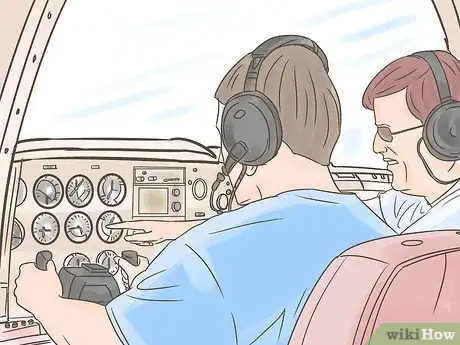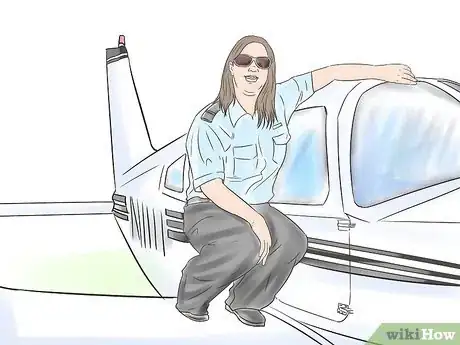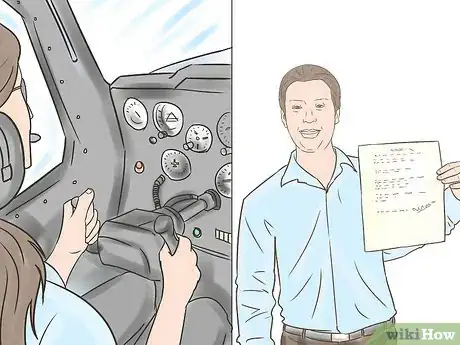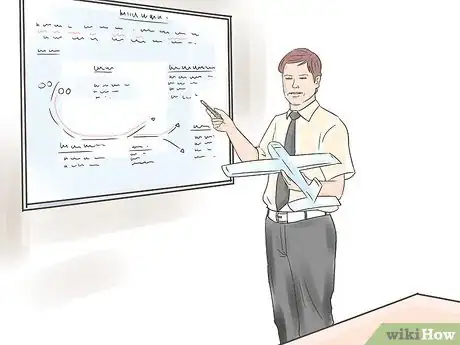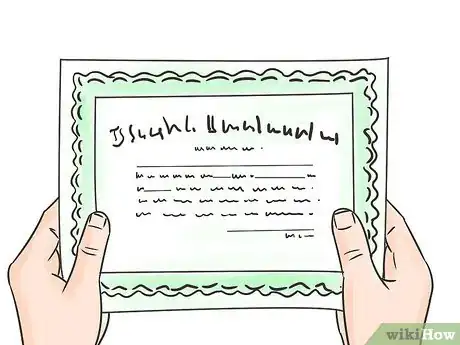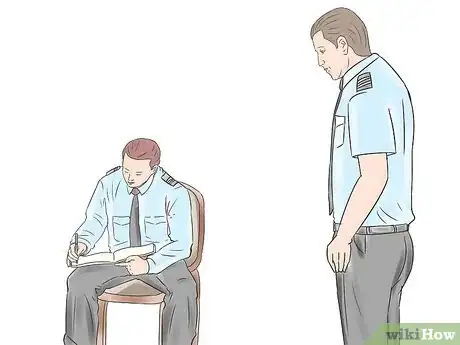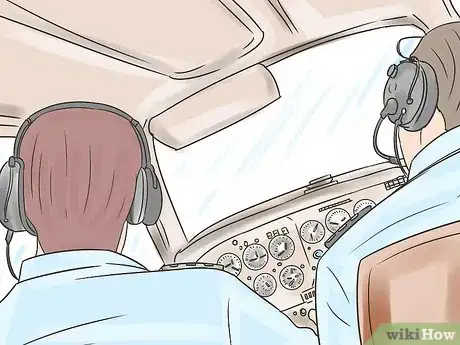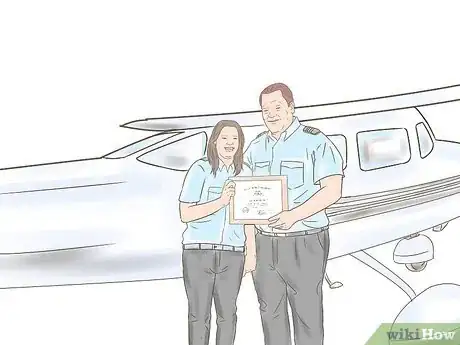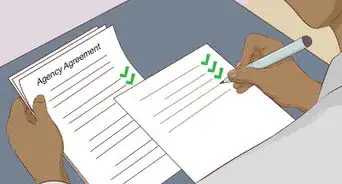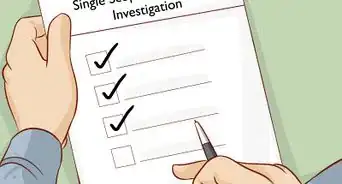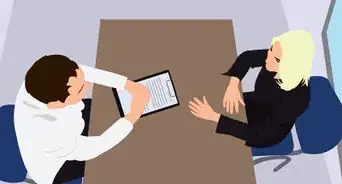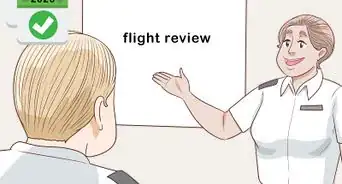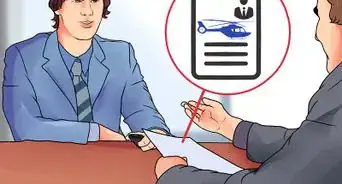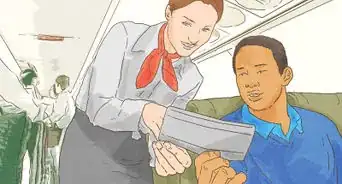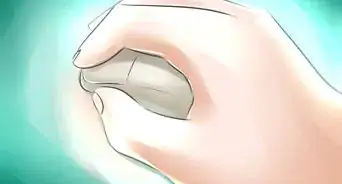X
wikiHow is a “wiki,” similar to Wikipedia, which means that many of our articles are co-written by multiple authors. To create this article, 12 people, some anonymous, worked to edit and improve it over time.
This article has been viewed 105,150 times.
Learn more...
If you want to share your love of flying with others, being a certificated flight instructor might be the perfect career path for you! We'll help you understand all the requirements you need to get started!
Steps
-
1Gain your private pilot license by enrolling in a flight school or other program with a certificated flight instructor.[1]
- Complete the coursework successfully and apply for a private pilot license. This means you can fly a private aircraft without pay.
- You must be at least 17 years old to take part in testing for your private pilot license.[2]
-
2Get an instrument rating.[3]
- You gain this rating by flying according to instrument flight rules (IFR).
- This allows you to fly in certain weather conditions such as rain and fog.
Advertisement -
3Apply for a commercial pilot license.
- You must be at least 18 years old, have 250 hours of flight time in the air, hold an instrument rating and undergo an additional medical exam.[4]
-
4Seek a flight instructor certificate.
- Your commercial pilot license and instrument rating must be issued for the type of aircraft with you will be using for teaching prospective pilots.
- Gain a logbook endorsement from an authorized flight instructor that lists time spent learning the fundamentals of flight instruction.
- Take and pass a knowledge test for flight instructors.
- Complete and pass a practical test for flight instructors.
- Prove that you are able to provide sufficient instruction in the areas of spin entry, spins and spin recovery.
- Log a minimum of 15 hours of being in command of a pilot.
-
5Receive a flight instructor certificate and begin working as a certified flight instructor.
-
6Sign the logbook of every person that receives training from you.
-
7Do not give more than 8 hours of flight training during each 24-hour period.[5]
-
8Maintain your flight instructor certificate through the renewal process.
Advertisement
Community Q&A
-
QuestionI am a retired commercial pilot with a 737-type rating. What do I need to do to get a CFI in a single engine land airplane?
 DanoyachtcaptTop AnswererIf you don't have any current time in aircraft, you will first need to get a type rating in the aircraft you want to teach in. Then you can start training for your CFI certificate.
DanoyachtcaptTop AnswererIf you don't have any current time in aircraft, you will first need to get a type rating in the aircraft you want to teach in. Then you can start training for your CFI certificate. -
QuestionI am a glider flight instructor with commercial ratings in ASEL and gliders. What do I need additionally to become an ASEL instructor?
 DanoyachtcaptTop AnswererYou need to get together with an ASEL (Aircraft Single Engine Land) instructor and get started, first in getting your certificate in ASEL. Then you can get your instructors license.
DanoyachtcaptTop AnswererYou need to get together with an ASEL (Aircraft Single Engine Land) instructor and get started, first in getting your certificate in ASEL. Then you can get your instructors license. -
QuestionAre there sponsorship options?
 Mzm555Top AnswererUsually no; however, an option open by many airlines is a "cadetship program" which hires a select few applicants every year or few years (depending on the airline) to which the chosen applicants are fully trained from scratch, no flying experience needed. The only condition is you will usually be under contract to the airline for a certain number of years, after which you are then free to switch jobs, airlines, etc...
Mzm555Top AnswererUsually no; however, an option open by many airlines is a "cadetship program" which hires a select few applicants every year or few years (depending on the airline) to which the chosen applicants are fully trained from scratch, no flying experience needed. The only condition is you will usually be under contract to the airline for a certain number of years, after which you are then free to switch jobs, airlines, etc...
Advertisement
Warnings
- Not complying with all of the federal rules and regulations associated with being a flight instructor can have serious consequences. Always stay up to date on news from the Federal Aviation Administration.⧼thumbs_response⧽
Advertisement
Things You'll Need
- Private pilot license
- Instrument rating
- 250 hours of flight time
- Commercial pilot license
- Logbook endorsements from authorized flight instructors
- Passing results on medical, knowledge and practical flight tests
- Proof that you are competent to instruct others during specific areas of flight
- 15 hours of time in command of a pilot
References
- ↑ https://www.telegraph.co.uk/travel/comment/how-to-get-a-private-pilot-license/
- ↑ https://www.faa.gov/pilots/become/rec_private/
- ↑ https://www.aopa.org/training-and-safety/active-pilots/ratings-and-endorsements/instrument-rating
- ↑ https://www.law.cornell.edu/cfr/text/14/61.129
- ↑ https://www.law.cornell.edu/cfr/text/14/61.195
- ↑ https://en.wikipedia.org/wiki/Flight_instructor
About This Article
Advertisement
